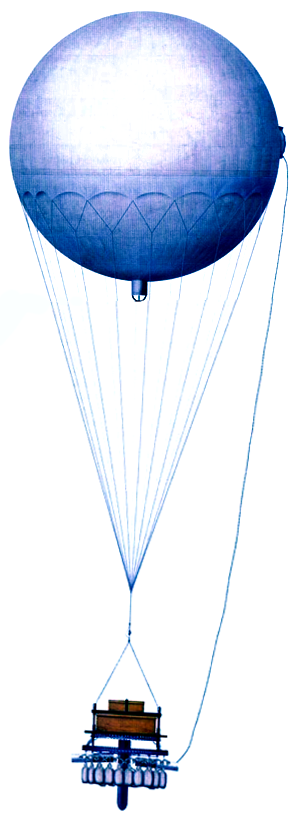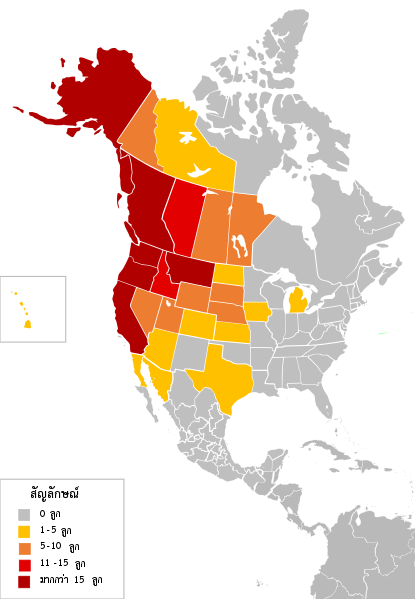The proof in the sand
31 Oct 2022

You may squirm, or you may throw a brickbat at me when you read this mixed metaphor. But here it is: the proof of the pudding is written in the sand.

If you read this short article to its end you will understand why this mixed metaphor is … well … not all that far of the mark.
This is a real story from the Second World War – about how some sand helped US investigators to pinpoint the source of the bombs that were flying over the western parts of North America.
Sometime in 1944, when the Second World War was still raging, Americans in Montana and Wyoming witnessed thousands of balloons drifting to the ground. A few of them landed and exploded in populated areas. People were injured. Six people were killed. Most others landed in unpopulated areas and caused no harm.
There were some crafty calculations behind the balloons. Each balloon, made of rice paper, had a basket attached below it, which held a bomb, and the basket was girdled by a few dozen small sandbags. The basket also had an altimeter attached to it, which maintained altitude throughout the journey launched until the end.
The altimeter helped maintain the balloon’s altitude. Whenever a balloon drifted low, a sandbag was dumped, and the balloon regained its desired altitude. Eventually the balloons would lose so much air that they would descend to the ground, and they would explode.
Although the actual harm was relatively small, the prospects of the bombs becoming more accurate and of their carrying more destructive explosives caused panic. And in that panic, the US government first assumed that the balloons came from one of America’s westernmost states – either Oregon or Washington.
On further investigation, however, they found that the sand in the sandbags did not match that on any beach anywhere in in northwestern America. So where could it have come from? Obviously, then, since the balloons were drifting in from the west, it had to be from Japan, with which the US was waging a deadly war in the Asia-Pacific region.
That conclusion was a start, but it wasn’t enough to discover the exact location in Japan from where the balloons were being launched. So the next question was: where in Japan were the balloon bombs being made?
It was important to get the answer to this question. For the launch site had to be destroyed so as to prevent further balloon attacks on American soil.
Some research uncovered the fact that Japanese scientists had discovered a weather pattern known as the jet stream. The American investigators realized the balloons could set sail from Japan and drift to America in about thirty-three hours if they were sent high enough into the atmosphere.
The American investigators figured that if they could pinpoint the origin of the sand that filled the sandbags, they could locate the factory where the bombs were being made. They examined the sand grains using high-power microscopes. Three important clues surfaced immediately.
- First, there were no granite or quartz crystal sand grains present, which would be characteristic of sand from continental landmasses. This clue made it likely that the sand was from an island.
- Second, there was no coral in the sand. That meant the sand came from north of the 35th parallel, because bits of coral are normally found in sand from tropical zones.
- And third, the sand contained a large amount of volcanic rock made up of rare minerals.

Where the bombs landed – Wikimedia Commons
Anil: Thai language box should be removed or English used instead
So, what happened?
In the six months between November 1944 and April 1945, the Japanese launched some 9,300 balloons, of which about 300 landed in the US, and some landed in Canada and Mexico.
In other words, crafty as the designers were, the balloon bombs failed to the damage they were expected to cause. Damp conditions over forests and malfunctions together resulted in many of becoming damp squibs instead of big bangs.
Sometime between late 1944 and early 1945, the Japanese deployed the Fu-Go balloon bomb as a cheap weapon that would use the jet stream over the Pacific Ocean to reach the west coast of the United States.
Relatively ineffective as weapons, they were used in one of the few attacks on North America during World War II, causing six deaths and a small amount of damage.
The balloons could have done much worse damage than they actually did. The Japanese were doing chemicals and biological weapons research at the time, and the Japanese Imperial Army's Noborito Institute cultivated anthrax and plague germs. The institute is reported to have produced enough cowpox viruses to infect the entire United States.
The Japanese military wanted to deploy these biological weapons on fire balloons; but Noborito Institute is said to have prohibited their deployment. Had they carried biological weapons, the Fugu balloons would have wreaked havoc in America. Consequently, biological warfare using Fu-Go balloons was not implemented.
But how did the Americans locate the source of the balloons?
American geologists got down to the task of figuring out which areas of Japan contained such minerals. And American biologists studied the microscopic fossils found in the sand. And the evidence showed that the sand came from somewhere near Tokyo. The question was: where?
The American forensic scientists examined the sand through an electron microscope, they found a rare type of diatom in the sand grains. Diatoms are a kind of micro-algae that have intricate silicate shells found in the oceans, of the world. The main components of plankton are living diatoms, which form a substantial part of the Earth's biomass, and generate about 20 to 50 per cent of the planet’s oxygen. These organisms take in over 6.7 billion tonnes of silicon each year from the waters in which they live, and they form about half the organic material found in the oceans.
Now why are we even talking of diatom species? This is why:
Each species of diatom creates a different kind of microscopic shell. When the American scientists got a fix on the particular diatom they found in the sandbags attached to the balloons, their research brought them to the notes of a French expedition that had discovered that particular diatom at a site in Japan, way back in 1889.
So now they had a suspect location. So reconnaissance flights were flown over Japan, and they found the exact site of the factory.
Then American bombers destroyed the factory, and the balloon bombs stopped coming!
The interesting thing I learned as I checked out this story was this: sand provides many clues to the composition of soil, rocks, and the mountains from which they come, and it also carries in it a biological record of the history of millions of years of marine life and the geological history of its remains.
It is this record that writes a kind of signature in the sand – a signature that doesn’t, unlike the saying ‘written in sand’, vanish quickly but lasts a very long time – and provides vital information to forensic scientists in life-or-death situations.
- - - - -
Oh, by the way, the word Fu-go should sound familiar to speakers of Konkani, in the western coastal region of India, where a balloon is called a ‘fugo’, sometimes pronounced as that and sometimes as ‘fugaw’! In adjoining Maharashtra state, a balloon is called a ‘fugaa’. An interesting coincidence, right?



















